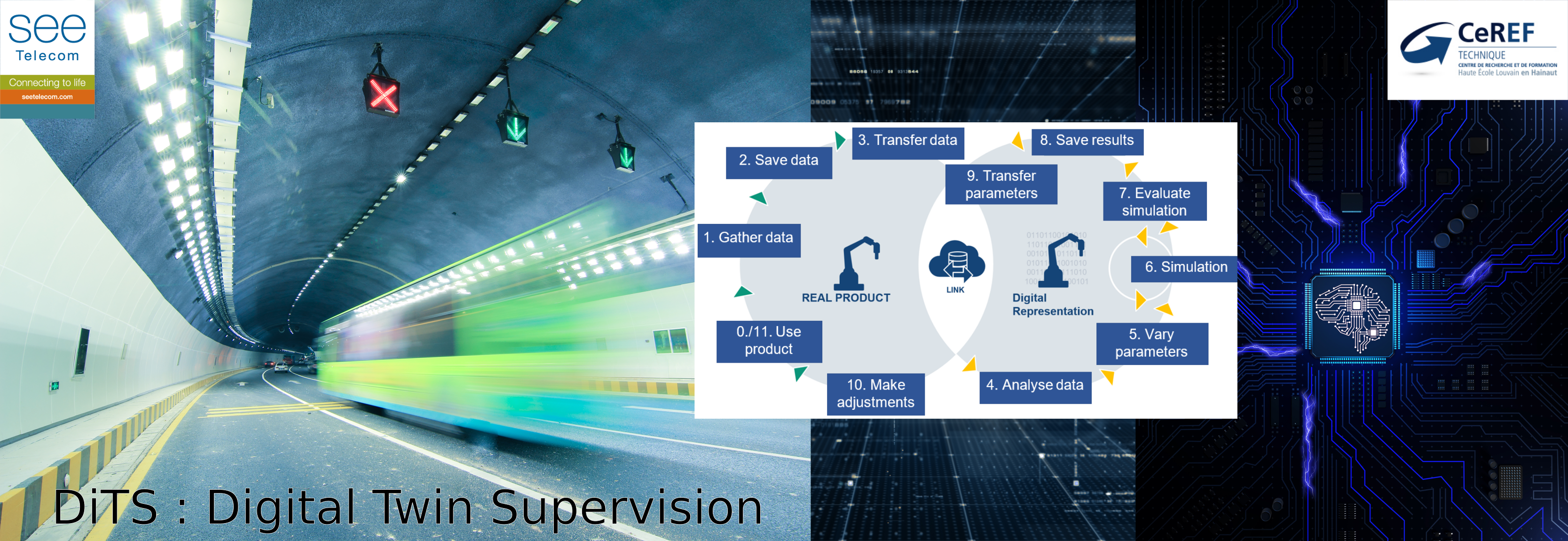
Français en dessous.
Confined space radio installations are mainly used by emergency services to ensure the safety of users. Due to their nature, they have to operate continuously and can have serious consequences in case of failure. As a result, they are usually overdimensioned to counter possible breakdowns. However, this design results in low data generation related to system failures. Predicting future malfunctioning based on this data with a machine learning algorithm is therefore highly complex.
The DiTS project is exploring the implementation of predictive maintenance through the development of a digital twin aimed at increasing the reliability and life span of these installations.
The objective is to develop a digital twin of a real radio retransmission installation in a confined environment. It will be a software solution that models and communicates with an installation in the field, while integrating artificial intelligence, in order to implement predictive maintenance.
A digital twin is a digital replica of physical elements or processes, which helps organisations to monitor, predict and optimise their performance throughout their life cycle. It consists of three parts: the real component, its digital model and the exchange of information between the two in real time.
In the DiTS project, the model is split into two aspects: a representation based on the laws of physics and one based on data provided by the real element.
The GNU Radio software was chosen as the modelling tool. It allows to create and code in Python customizable components in order to simulate different modules of a telecommunication chain. The gain, power, IP3 and noise behaviour of these components are governed by telecommunication equations. In addition, the temperature of these components was approximated by junction temperature equations.
Data-driven modelling is based on artificial intelligence, and more specifically on prediction algorithms applied to time series. Two algorithms are being investigated in our project: ARIMA and the Temporal Fusion Transformer. Beforehand, the data have been subjected to a sensitivity analysis using the scatter plot and Morris methods.
The final step will be to associate these two models to obtain a more detailed and accurate representation of a telecommunication chain.
The benefit of this digital twin in the context of confined space security is that it can continue to evolve to include other aspects of the tunnel, such as air flows, home automation or building monitoring.
Le projet DiTS consiste à développer un jumeau numérique. L’objectif de celui-ci étant d’être une réplique logicielle fidèle (dans son comportement) d’une installation réelle chez un client de SEE Telecom. S’il est fidèlement modélisé le jumeau permettra de simuler et de constater des défauts sur l’installation virtuelle. Cette étape aura pour but de générer des données nécessaires pour entrainer une intelligence artificielle. Celle-ci servant à la maintenance prédictive du système et à l’apprentissage automatique.
Associé à ce jumeau, une utilisation des données générée par le jumeau numérique afin d’entraîner une IA à la maintenance du système. Pour ce faire nous utiliserons un algorithme d’apprentissage par renforcement afin de tester les différents états du système. L’algorithme d’optimisation développé lors projet OTIDAM sera utilisé comme objectif d’apprentissage de l’algorithme d’apprentissage par renforcement.
Au terme du projet, l’intelligence artificielle ainsi entrainée devrait être capable de maintenir l’objectif d’optimisation du système et ce même si les paramètres d’entrée du système se dégradent au fur et à mesure du temps.